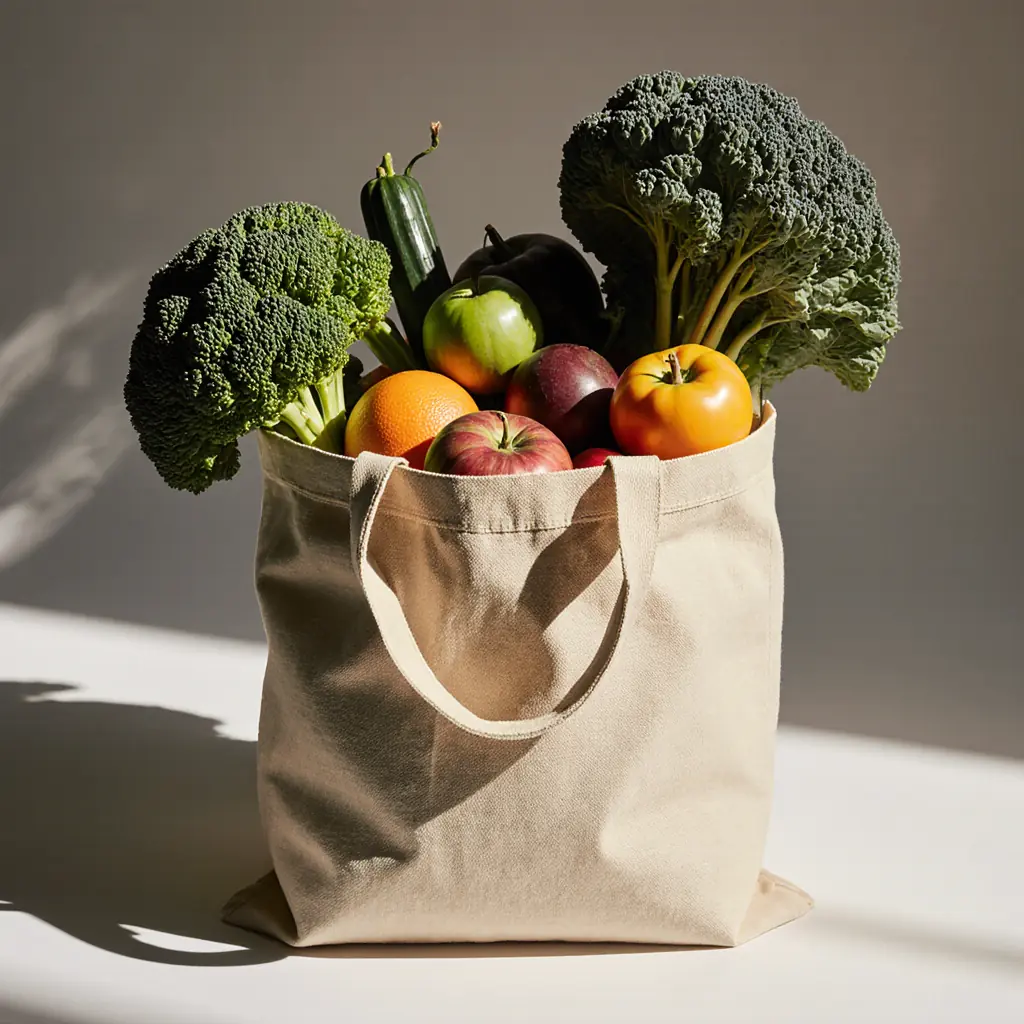Fabric bags: when your fruits and vegetables finally breathe healthy!

At UglyFruits, we love when our vegetables can finally breathe... and not just make us sigh in admiration! Today, let's talk about a solution that's as simple as it is effective for extending the freshness of your fruits and vegetables: fabric bags. No more plastic that makes your radishes sweat more than a workout session!
Why choose fabric bags?
Fabric bags offer an eco-friendly and practical alternative to plastic packaging. Unlike plastic that traps moisture and speeds up decomposition, fabric allows optimal air circulation. Your vegetables can “breathe” naturally, which slows down the degradation process and keeps them fresh longer. It’s like giving your vegetables a little spa getaway!
The benefits of fabric bags
Moisture regulation is the first advantage of fabric bags. Cotton or linen absorbs excess moisture while maintaining a slightly humid environment, ideal for preservation. Plus, these bags are reusable, washable, and biodegradable. A winning combination for your wallet and the planet!
Fabric bags also protect your produce from direct light, which causes degradation in many vegetables. Finally, they allow for organized and breathable storage in your refrigerator or pantry.
Which fruits and vegetables to choose?
Root vegetables like carrots, turnips, radishes, and beets love fabric bags! They keep their crunch and flavor for up to two weeks. No more getting the blues… well, the blue of mold!
Leafy vegetables (spinach, lettuce, arugula) also find happiness in these bags. The regulated moisture prevents premature wilting while preventing rot. Your salads will keep their pep longer!
Fresh herbs (parsley, cilantro, basil) particularly enjoy small fabric bags. They retain their aromas and vibrant color. It’s the perfect solution!
For climacteric fruits like pears, plums, or kiwis, fabric bags slow down ripening while allowing even maturation. Perfect for spreading out their consumption over time.
The exceptions to know
Careful, not all produce is a fan of fabric! Tomatoes prefer open air at room temperature. Potatoes and onions need a dry and dark environment, preferably in wicker baskets. Bananas and citrus fruits also keep better in open air.
Our practical tips
Choose organic cotton or linen bags, which are more breathable than synthetic fibers. Vary the sizes according to your needs: small bags for herbs, large bags for root vegetables. Wash your bags regularly in hot water to eliminate bacteria.
Slightly dampen the bags before placing your leafy vegetables in them—this optimizes their preservation. Regularly check the condition of your vegetables and immediately remove any that show signs of deterioration.
With UglyFruits and your fabric bags, your ugly but good vegetables will live longer and happier! A win-win solution to reduce Food Waste while preserving the nutritional quality of your precious vegetables. A great way to beat waste!








